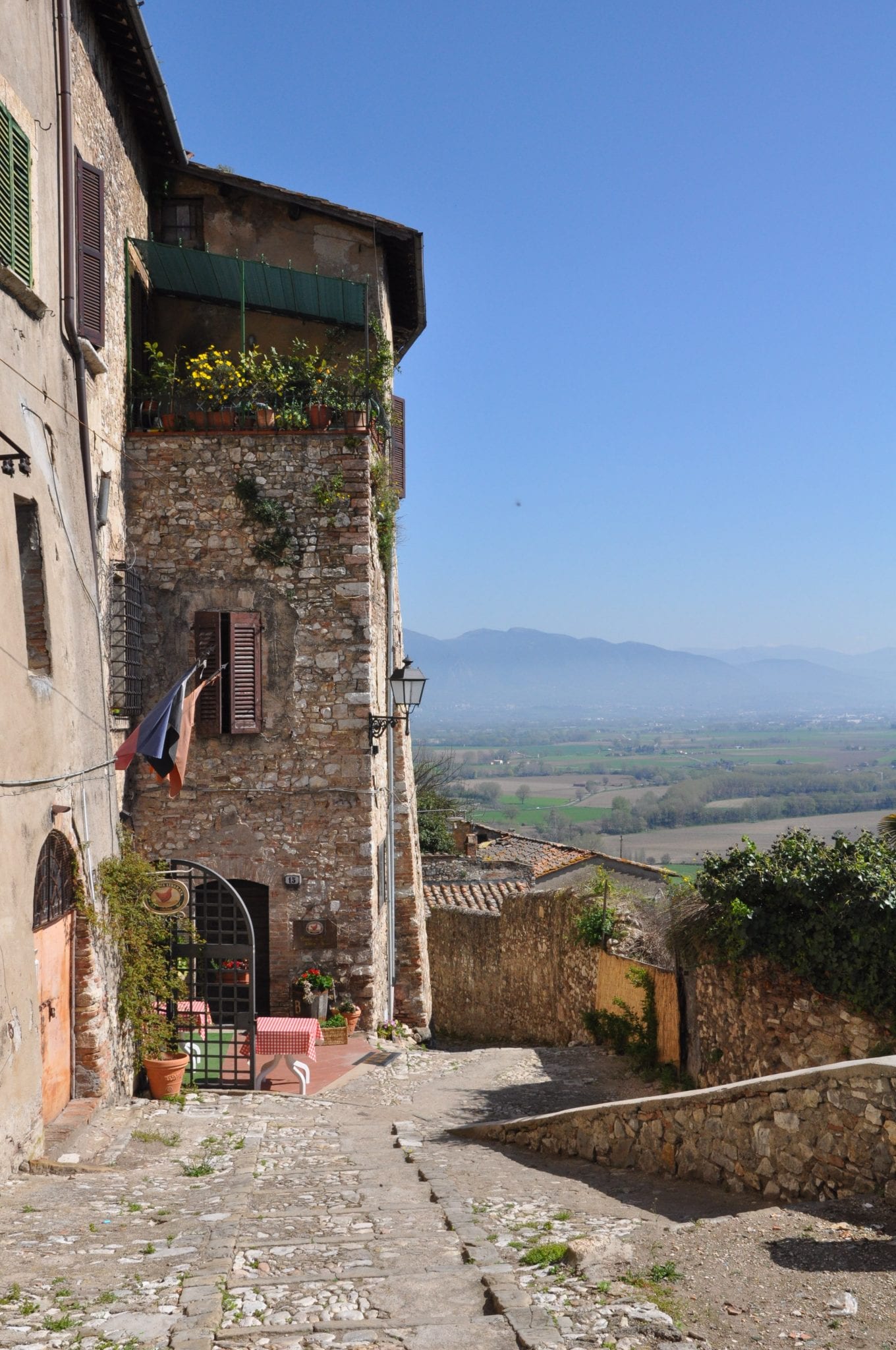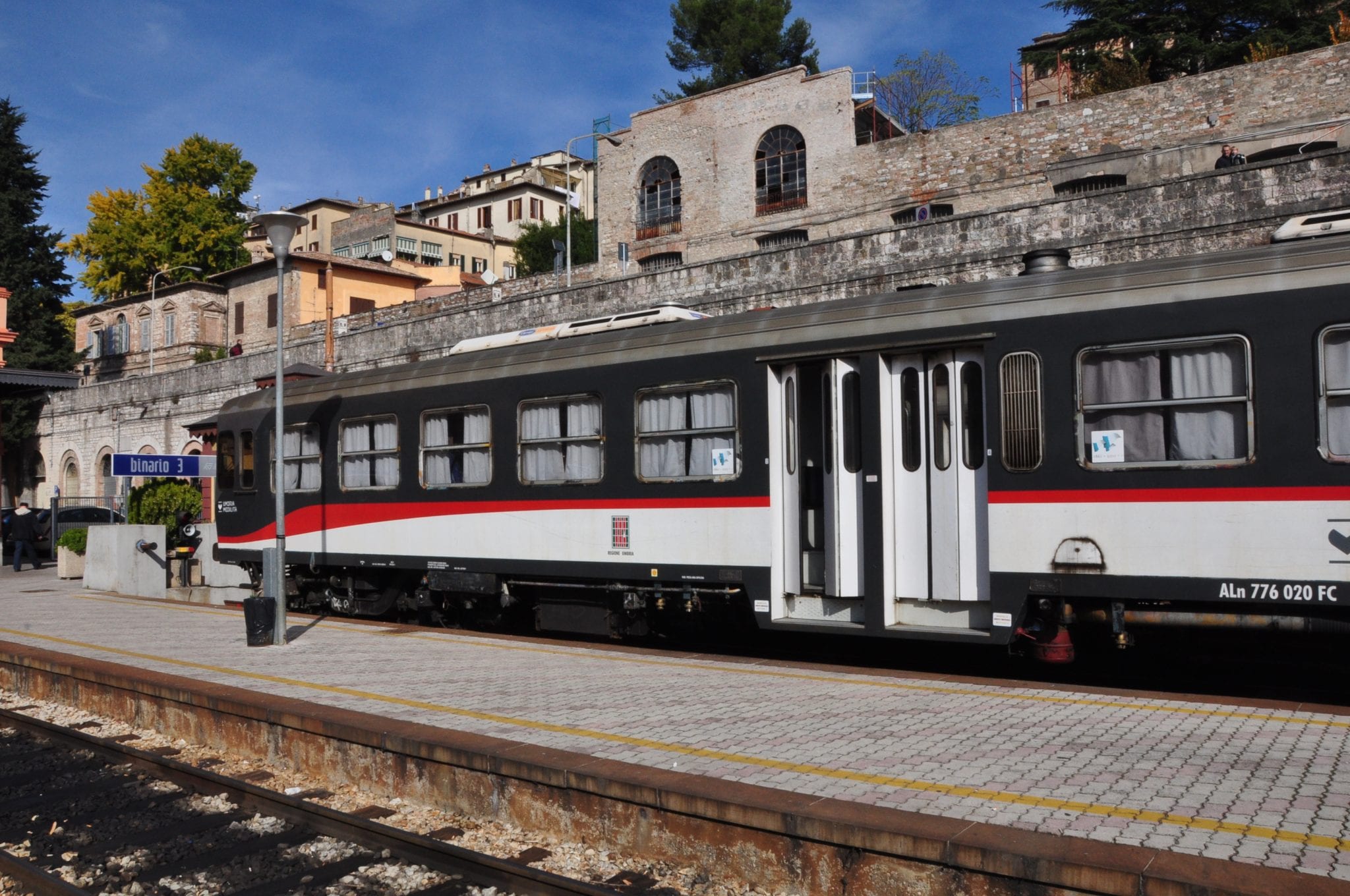
Public Transportation in Umbria: Navigating Umbria by Train and Bus
November 15, 2024
With its rolling countryside, fantastic food, and medieval hilltop towns, Italy’s region of Umbria is impossible not to fall in love with. What some visitors to Italy struggle with, though, is how to get there—and how to move around within Umbria once they’ve arrived.
Why is this tricky? Well, we’re always proponents of taking trains in Italy, but at first glance, Umbria can be a little tough. That’s because, first of all, most of the towns aren’t directly connected to big cities like Florence or Rome, meaning you have to switch trains once or twice to get to your destination. And secondly, medieval hilltop towns means no train station in the town—instead, stations tend to be a drive away.
Insider’s tip: Yes, you could rent a car and drive. But for reasons we’ll explain further in a future post, we don’t always recommend this. Briefly: The Italian road and signage systems are different from back home, sometimes surprisingly so; there is a different [and, for foreigners, often scarier] driving etiquette, particularly on highways and in cities; and it can be very, very easy to get lost, especially on back roads and the countryside.
But guess what? Despite the apparent transport hurdles, it’s easier to get around Umbria than you might think! On our last trip to Umbria, we were surprised at how well-connected the towns are. We were also surprised at how beautiful the rides were. Both the Umbrian regional train and the buses took us past gorgeous farms, vineyards, forests, and hills.
Most information on how to take Umbria’s trains and buses is in Italian, however. And that’s where we come in. Want to get around Umbria and visit its loveliest small towns, without a car? Here’s how.
Table of Contents
ToggleStep one: Figure out which trains connect towns in Umbria
This can be a little confusing. Most people are used to using the official Trenitalia site to look up trains. While the Trenitalia site shows you the stops on the national rail service, though, it actually doesn’t include some regional lines, like the one in Umbria. For that, go to this website of Umbria’s regional and national trains.
Once you’ve switched to the regional train, meanwhile, you can see that you can get off at even more towns in Umbria, some of them destinations in their own right, like Città del Castello, Todi, and Perugia.
Step two: Check out the timetables for trains in Umbria
For the Trenitalia trains (black line), just go to their website and enter your departure, destination, and date. For the regional trains (blue line), go to the Umbria Mobilità website, and just click on the town name you want to visit.
Step three: Figure out if the train station’s actually near the town

The hilltop town of Narni is beautiful—but, if you’re walking, it’s far from the train station, so get a bus!
Often, it’s not. But that’s okay. Buses regularly run from the stations to the towns, roughly corresponding with incoming trains. (They run less often, as do the trains, on Sundays and holidays).
Here’s how to find your bus: Either wait until you’re at the station and ask… or, if you want to make sure everything’s planned, use a Maps app to see if it gives you additional options from the ones you’ve already seen.
Generally, we don’t worry too much about exactly which stop is the one in the center—with medieval hilltop towns, you can tell when you’re close!
Step four: Check the buses between Umbrian towns
Not all towns in Umbria have train stations. And even those that do might have a faster connection—even from, say, Rome—by bus. So it’s worth looking into bus schedules.
Sulga Autolinee connects cities, including Rome, Florence, Naples and Milan, with a number of Umbrian towns, like lovely Gubbio, Todi, and Assisi.
Putting it in action: Rome to Todi
For the sake of examples, let’s say that you want to get to Todi (a lovely town!) from Rome.
The first thing you’d do is see what trains can get you there. You can see that (great!) there’s a Trenitalia train that goes from Rome to Terni, and then you can hop on a regional train from Terni to Todi.
Next, you go to Trenitalia’s site and see when the Rome to Terni trains leave and arrive. Let’s say you want to take the 9:50am train from Roma Termini; You’ll get into Terni at 10:39am. With you arrival time in mind, you look for the Terni -> Todi -> Perugia schedule, and look down the times to see when a train leaves from Terni. The train from Terni onto Todi that leaves at 11:10am is perfect. There are a couple of stops in Todi, so you do a quick Google search to see which is the main station; it’s Todi Ponte Rio, and the train arrives there at 11:53am. Great!
Now, though, you have to figure out how to get from Todi’s station into Todi’s center. You could call a taxi when you get there, but you want to see if you can take a local bus. Luckily, the Umbria transport website makes this easy, too. Simply click on “Todi.” Still, that means that the whole trip will take about 2.5 hours. Not terrible, but can you get there faster?
So, first, you check out inter-town bus lines on the same Umbria site. Buses listed here run from Todi to lots of other hubs, including Perugia and Assisi, but not Rome. So then you check the Sulga bus site. Success! “Citta di Castello – Todi – Rome” shows up on the front page. You click on “Orario Completo,” next to it, to make sure you can see everything. Once confirmed, you see it’s definitely faster, and gets you right from Rome to the center of Todi without having to change lines—but, of course, you have to decide if arriving in the evening is okay.
Have any questions about travel in Umbria, or anywhere else in Italy? Let us know in the comments!
You might also like:
The Best Foods to Eat in Umbria and Tuscany
How to Take a Gondola in Venice
In Autumn, Truffle Festivals Take Over Italy
by Walks of Italy
View more by Walks ›Book a Tour

Pristine Sistine - The Chapel at its Best
€89
1794 reviews

Premium Colosseum Tour with Roman Forum Palatine Hill
€56
850 reviews

Pasta-Making Class: Cook, Dine Drink Wine with a Local Chef
€64
121 reviews

Crypts, Bones Catacombs: Underground Tour of Rome
€69
401 reviews

VIP Doge's Palace Secret Passages Tour
€79
18 reviews

Legendary Venice: St. Mark's Basilica, Terrace Doge's Palace
€69
286 reviews












